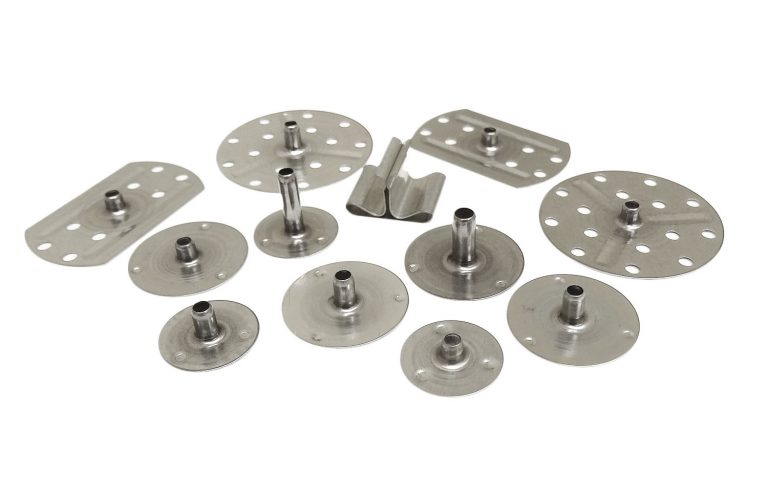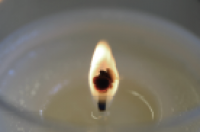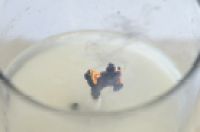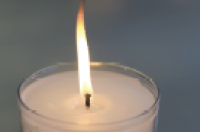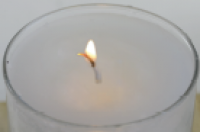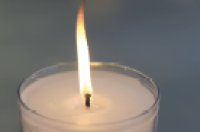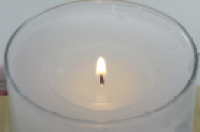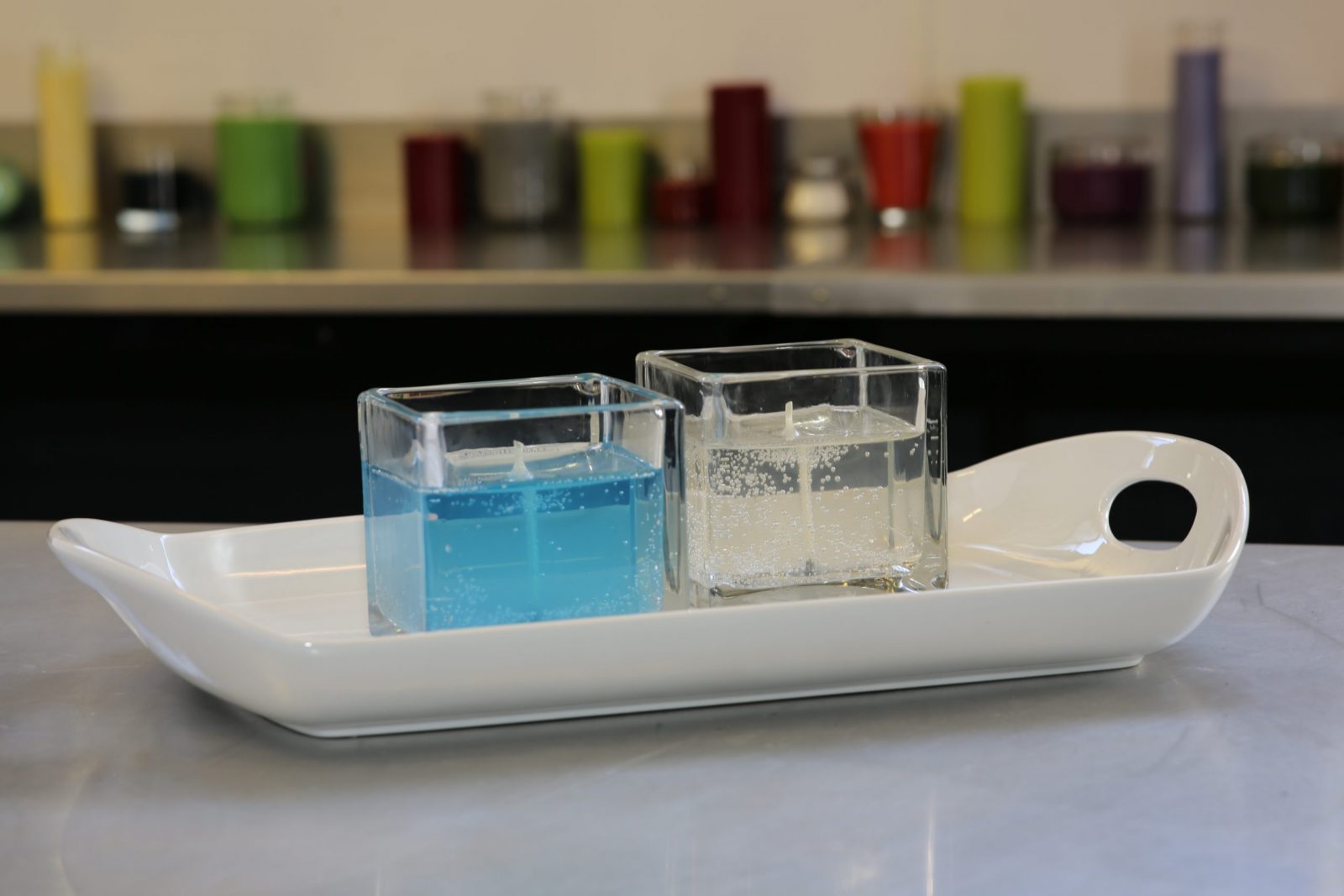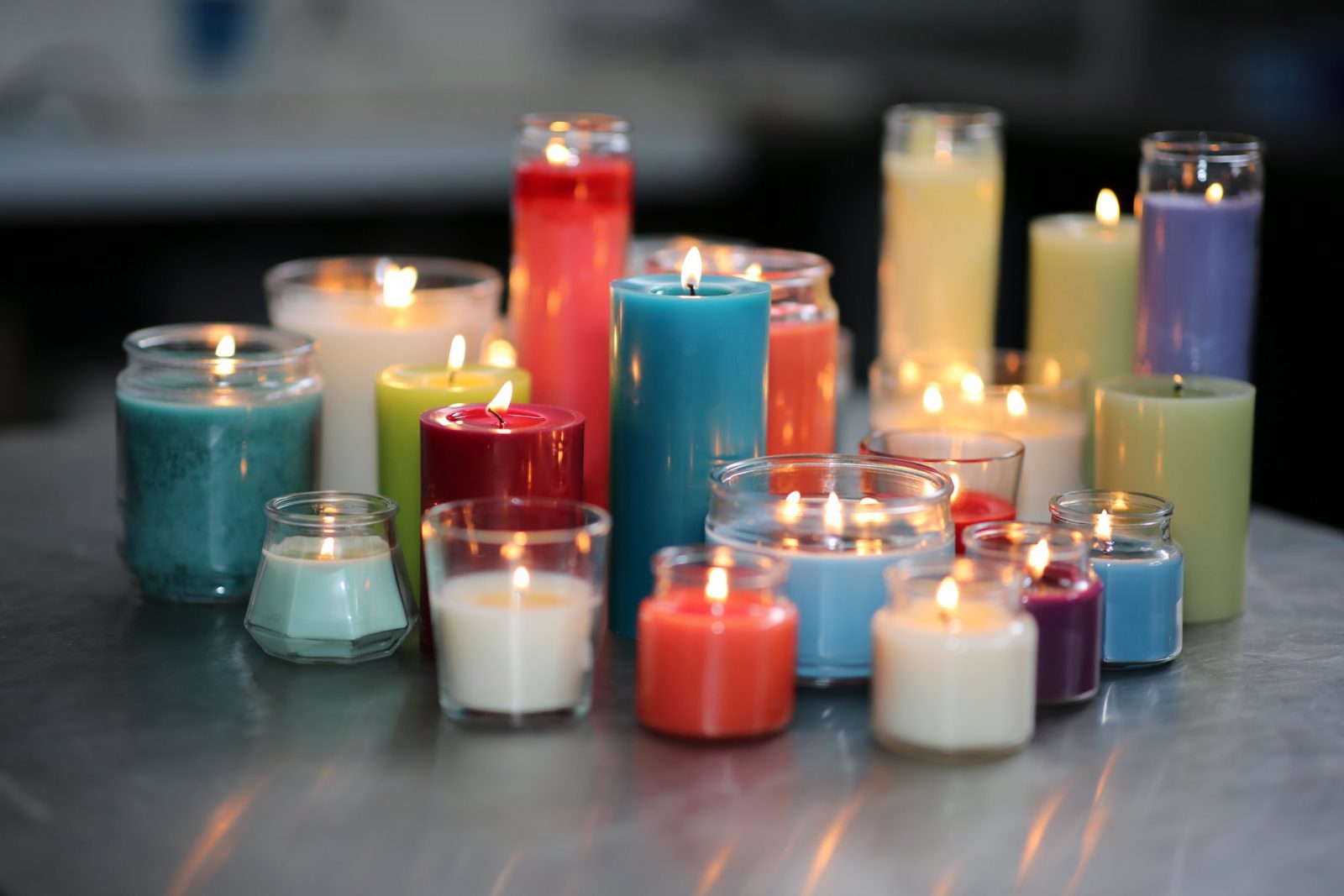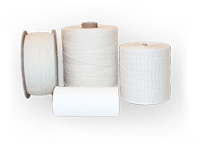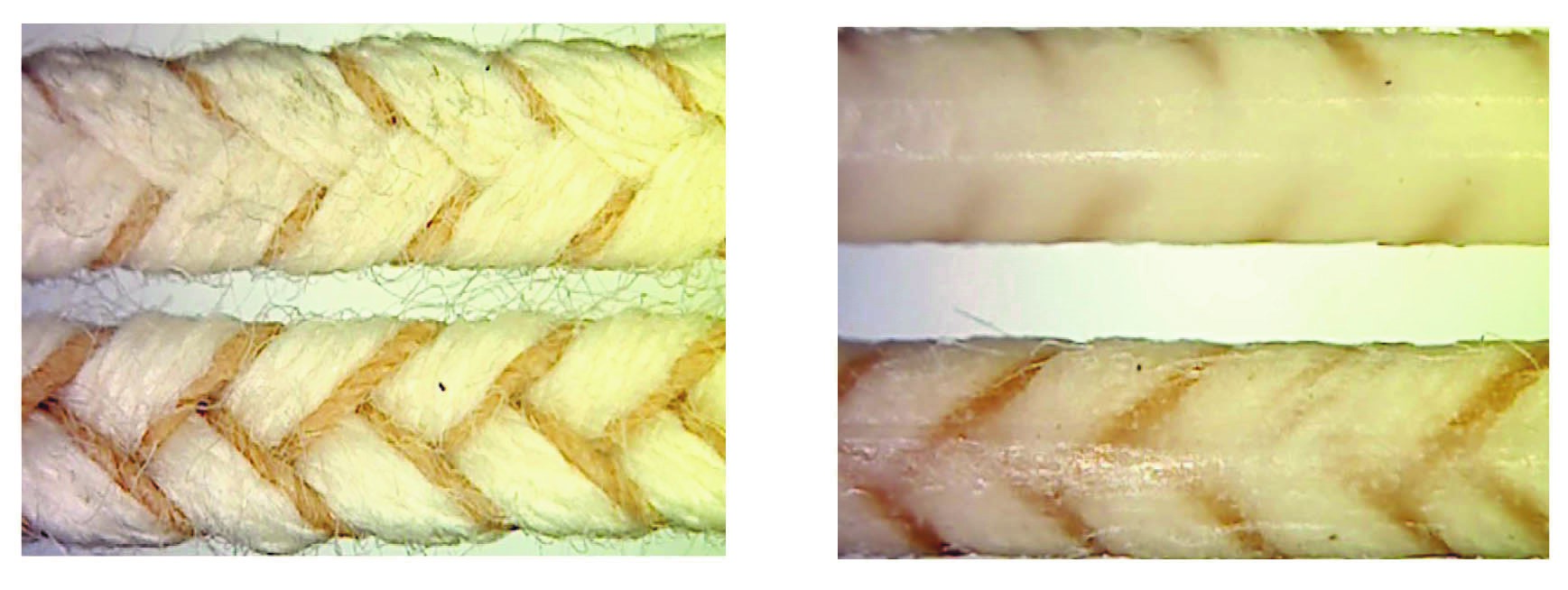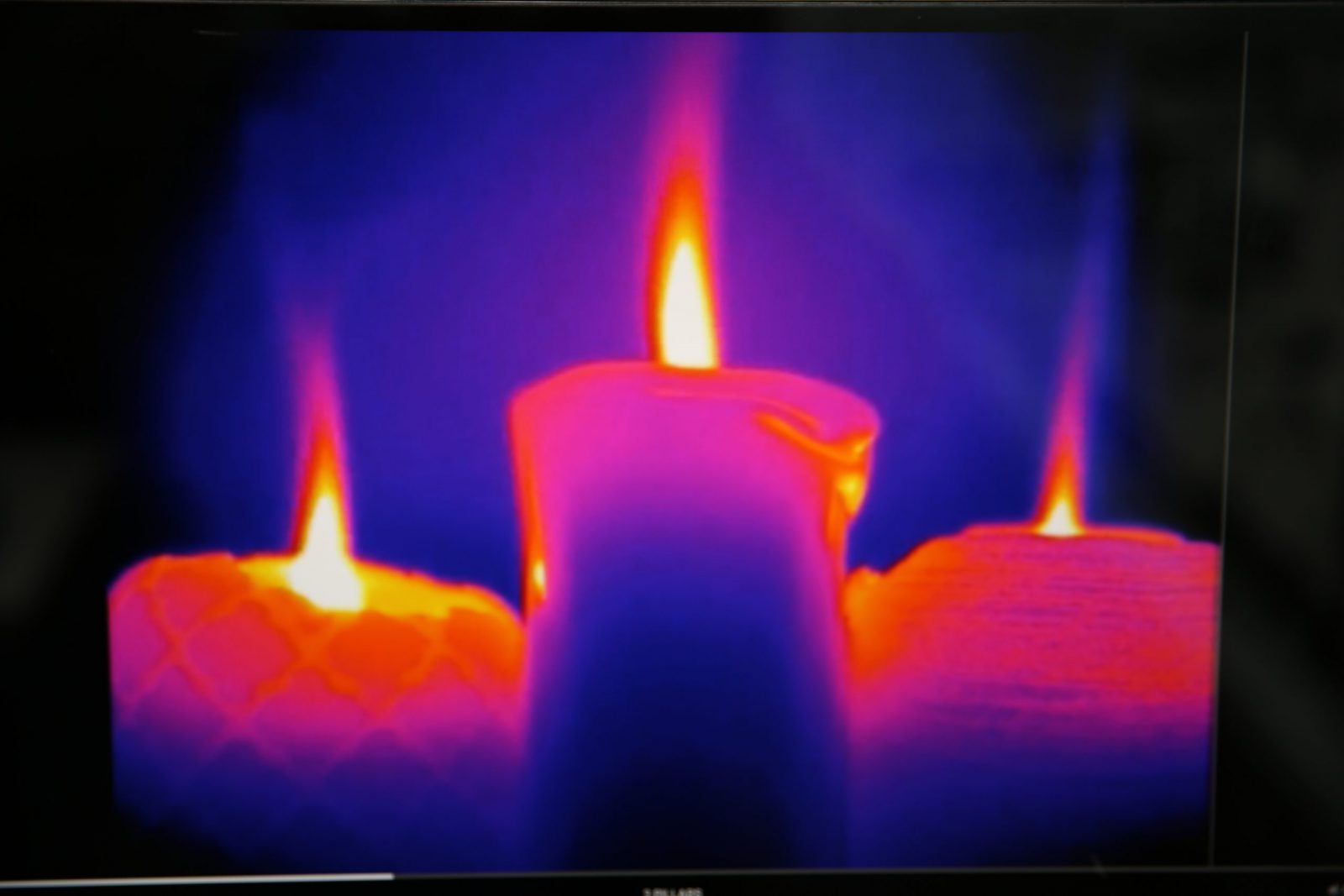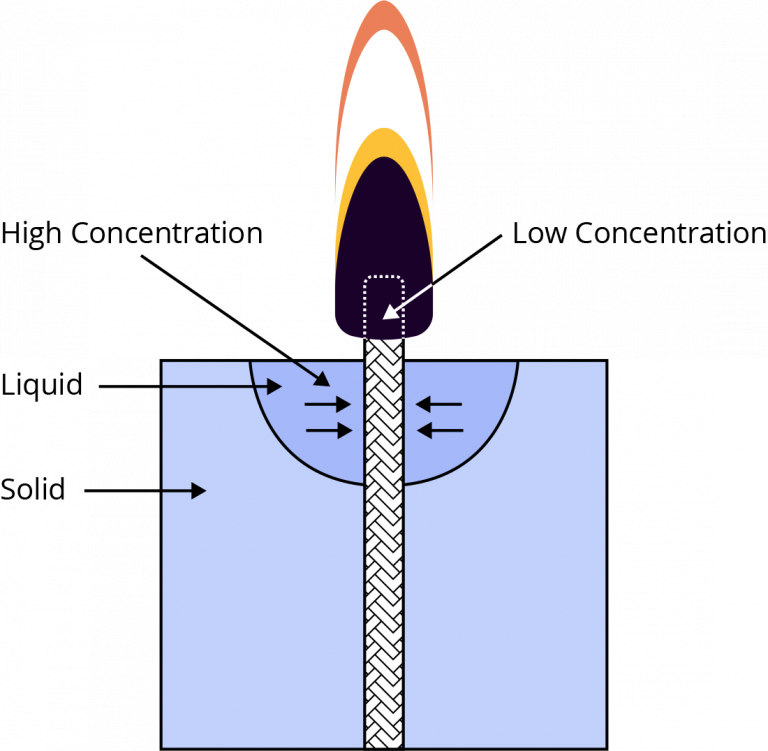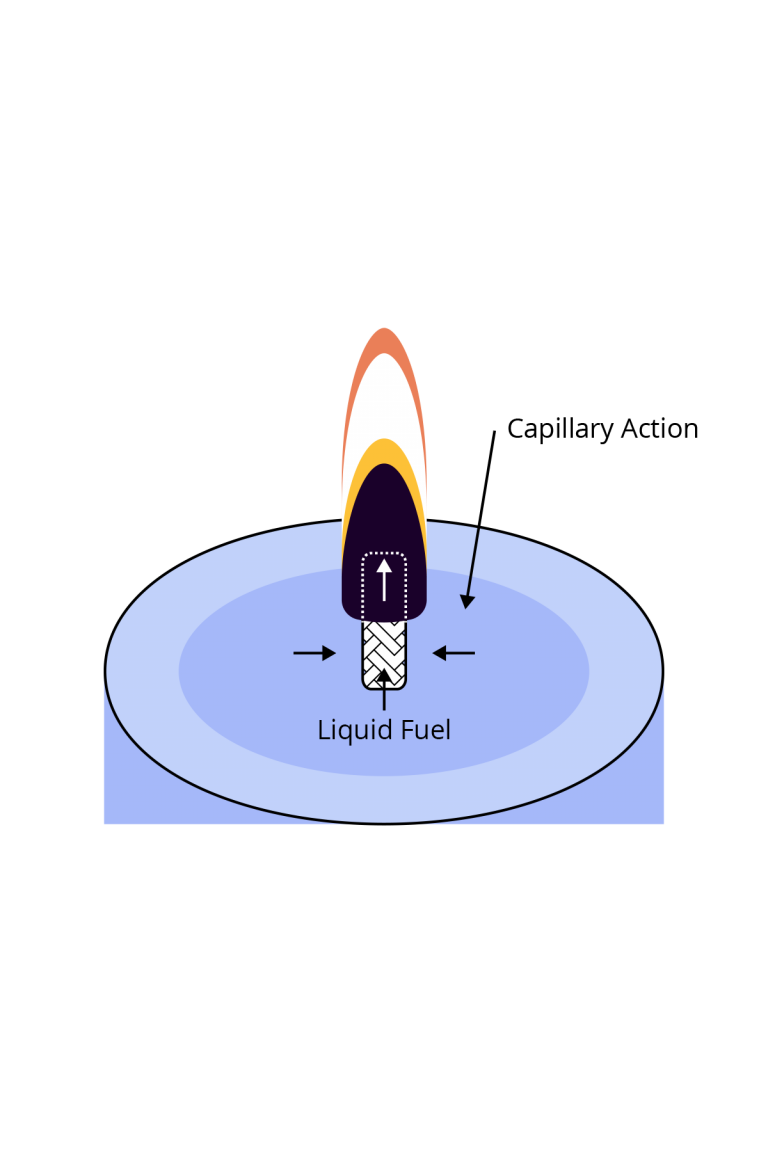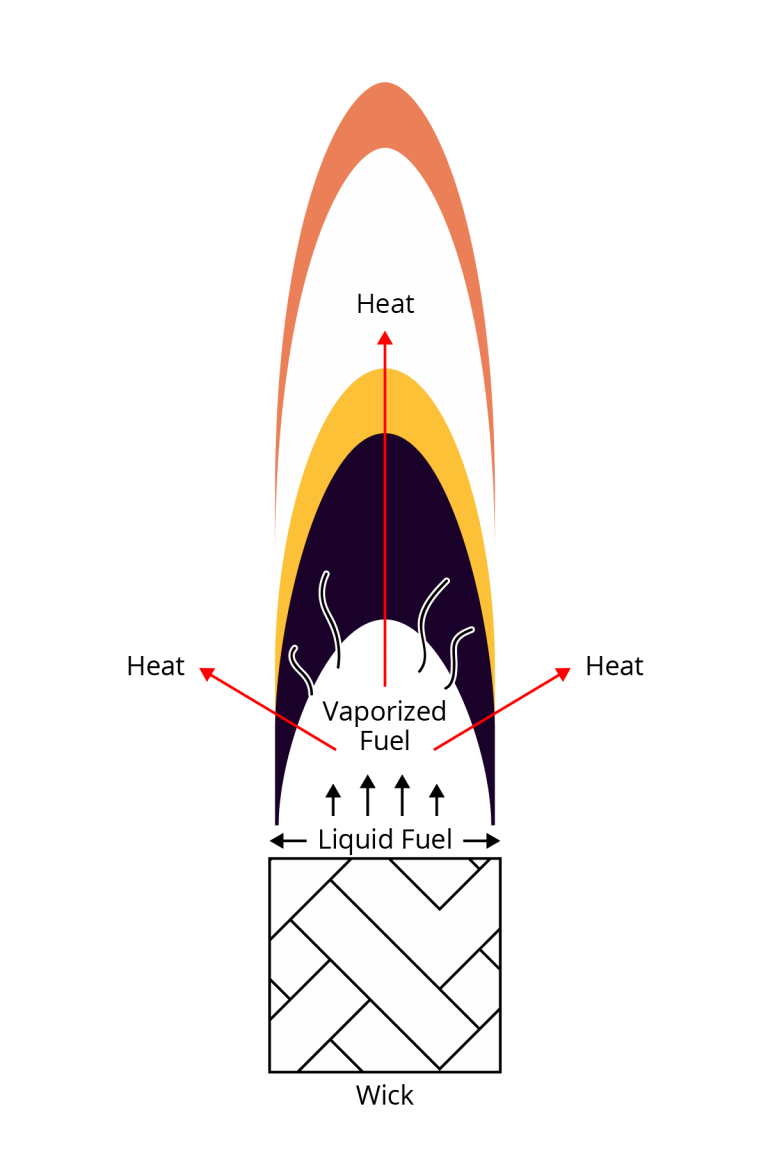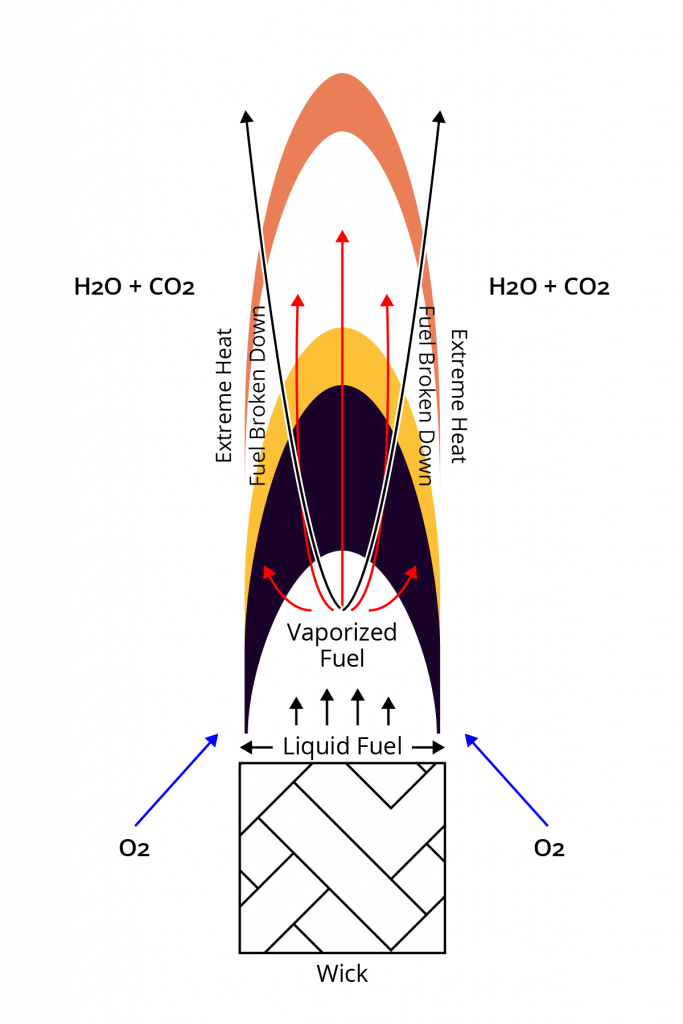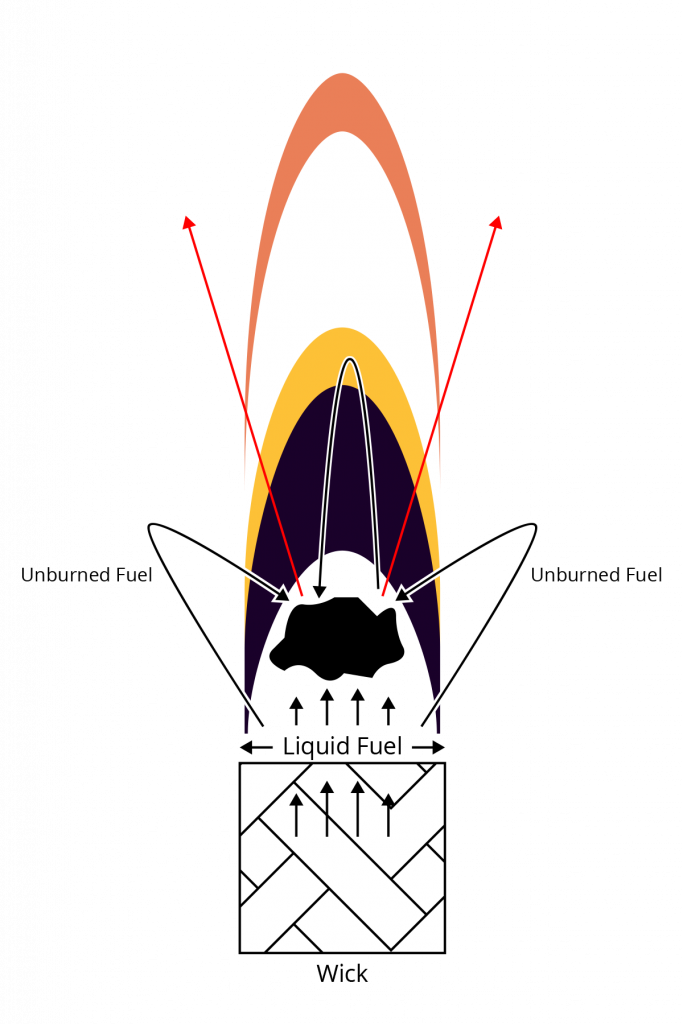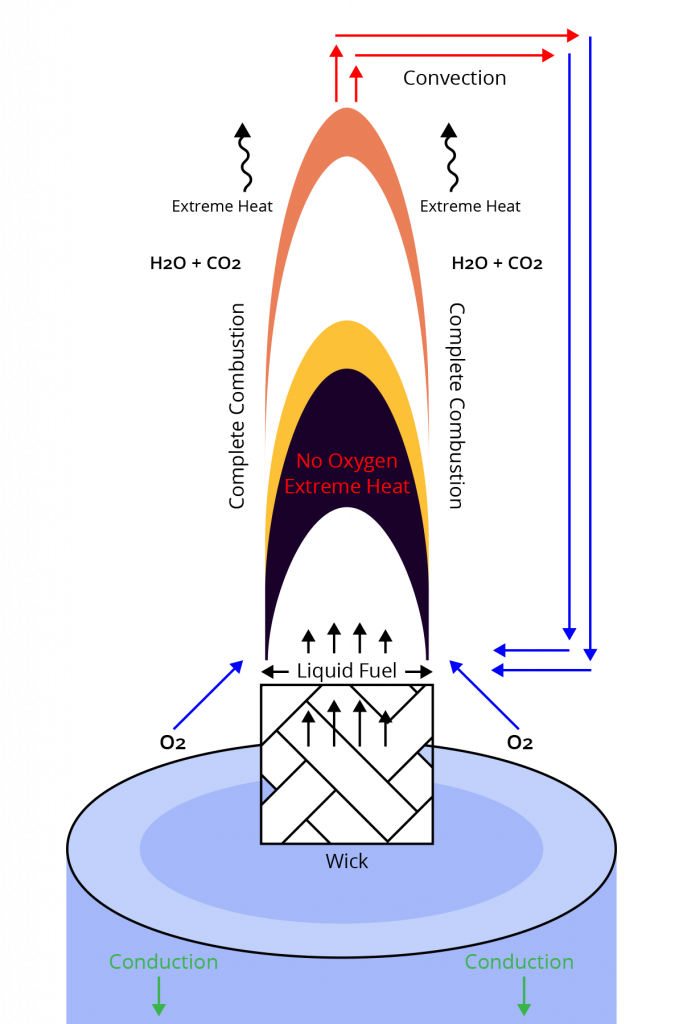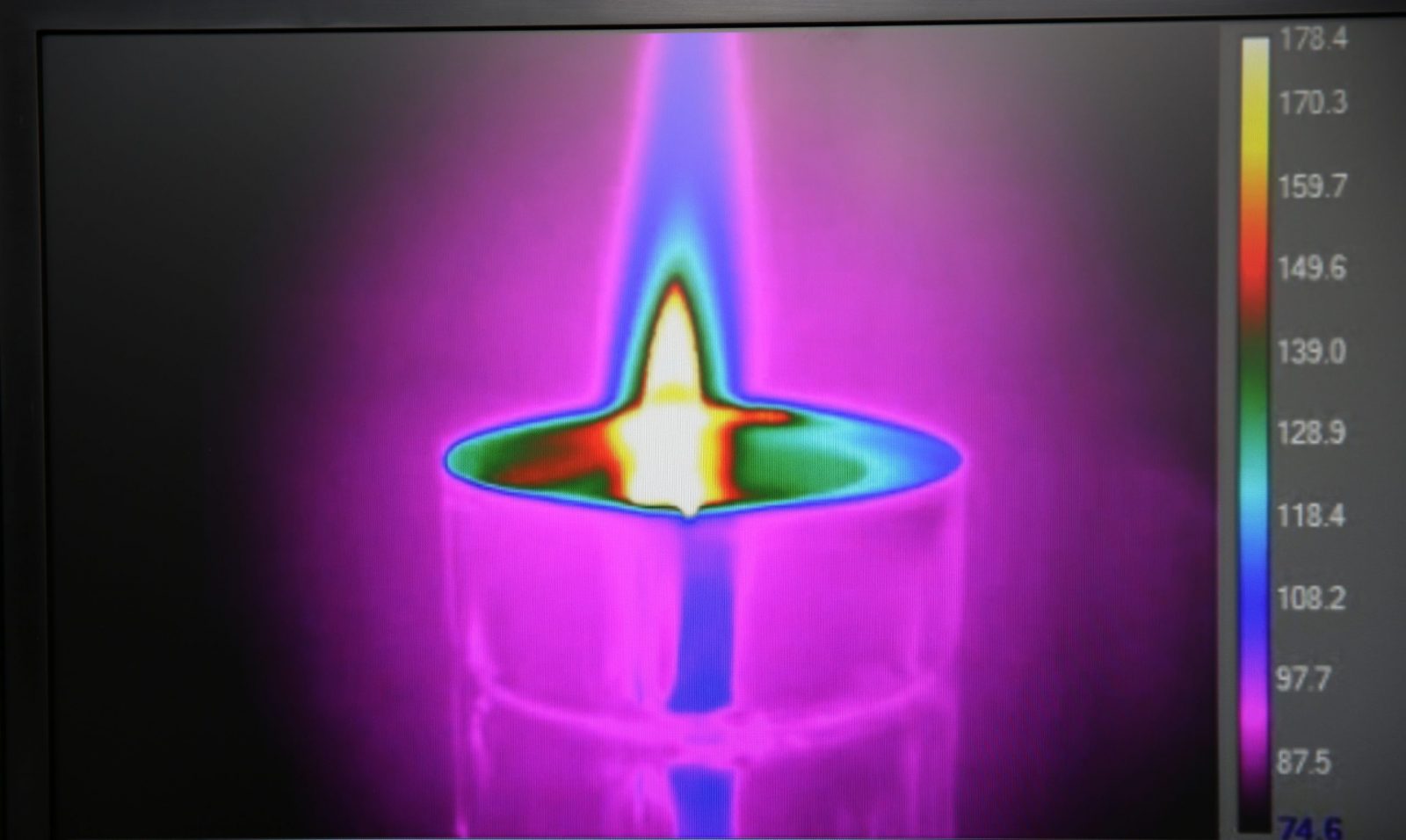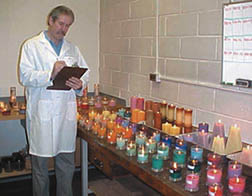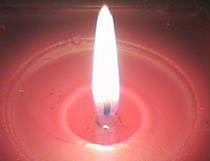In our travels and discussions with people in the candle industry, we have been surprised to learn that there are still manufacturers who believe that their cost to wax their candle wick is simply the cost of the components…the wick and the wax. Surprising, but true.
Fortunately most people in the industry realize that this is just the beginning of the cost of preparing the wick for the candle making process. But how much does it really cost to wax your wick? To try and answer this question, we put on our accounting hats and prepared an outline of what we view to be the typical and “hidden costs” of waxing your own wick.
Phase 1: Raw Materials – The cost of raw materials (wick and wick-wax) is the beginning point. To this we need to add an allocation of time of the purchasing staff, as well as the time of receiving and inventory personnel. To be safely prepared we need to purchase and inventory raw material in adequate quantities to ensure availability as required by production. Space must be allocated to store both raw materials and in-process product. Are these overhead expenses minimal in relation to the cost of the actual raw material? They probably are. But they are there and need to be accounted for. But what about the space demands of storing the waxed and unwaxed wick and of the wick-wax? Minimal space demands, probably not. Could this space be used for more productive purposes? Probably so.
Phase 2: Production – Next we move to the production process. The wick is removed from inventory and the wax baths prepared. Care must be taken to ensure a satisfactory and consistent application of wax. Drying the wick perfectly is imperative. Timing of the flow of waxed wick to candle production must be maintained. If there is a delay, there is downtime and loss of profits. What costs have we incurred up to this point? We have the direct labor of the wax bath operators, as well as the indirect labor of the material handlers and supervisory personnel. Then there is the maintenance of the waxing machines. We are all aware that traditional waxing machines require maintenance. The finished waxed wick is then forwarded to candle production. What costs have we now incurred? Well there was material handling into, within and from the department. There is the waxing personnel. There is the maintenance and engineering staffs. There are fringe benefits and employee safety programs. There is downtime and vacation time. And, we really haven’t gotten to overhead yet.
Phase 3: Capital and Factory Usage – Waxing machines are not inexpensive and depreciation and repair outlays add to your waxing cost. Next, let’s give some thought to the significant amount of floor space required for the storing of raw and in-process wick, and especially as needed for the waxers. How much space do they occupy that could be used for other needed purposes or expansion to meet the needs of the marketing team. With square footage, don’t forget to allocate their proportionate share of overhead in the nature of real estate taxes, electric, building depreciation and maintenance.
Phase 4: Allied Expenses – Do you need to invest more money in waxing machines just to keep up? Then there’s the Human Resource challenge of finding and hiring operators and mechanics…and let’s not forget the cost of their fringe benefits, vacation time and sick days. And, we need to add in a factor for machine downtime. The operators continue to accrue labor and benefit costs as the mechanics repair the waxers once again. Now the accountants’ adding machines are really cranking away. Now we’re getting a feel for what it really costs.
Alternative: So, these are the tangible expenses of doing your own waxing. The option (whether to do it yourself or take some of the burden off of your own team) is to receive top quality product made to your specifications, in house, on time, every time, ready to go into production. Seems a lot simpler. You work with us to select the wick and wick-wax. We provide you with exactly what you choose. Let’s be straight forward here, if you don’t like our product or service, we lose. If all goes as anticipated, you’ll feel like a genius. Simple, delivered to your door, ready to go. We see ourselves as a value added premium combustion component supplier to the candle industry. You purchase the candle wax, fragrances, glass as a finished product. Why not the waxed wick? The choice is yours.
And, Now for the Fun “Stuff”: Enough of the cost accounting, let’s touch base on some of the inherent benefits you will reap by obtaining the finished waxed wick, ready to go into production, from Wicks Unlimited.
-
- No need to secure and stock raw wick. Wicks Unlimited maintains large quantities of the most technically advanced wick from Wedo, Technical Braiding, Sao Vitor and Atkins & Pearce. We work with the leading wick manufacturers to develop new wicks to meet the requirements of today’s candles. Once your wick requirements are determined, we go out and purchase and maintain in inventory a minimum of six months supply of your raw wick. The potential for delivery delays is curtailed right from the start.
- It gets better. With our very popular “Make and Hold” program we will wax your wick and maintain it in OUR inventory. You place orders for your upcoming requirements and agree to take shipment of it within six months. We go ahead and wax your orders to your specifications and put them into inventory. When you call up requesting shipment, it goes out our door the same day!
- Now let’s talk about the quality of the product you will be receiving. Let’s start with the machinery itself. Traditional waxing machines “cover” the wick by applying a thin coating of wax to the outside of the raw wick. It is not uncommon that during this procedure, gear or chain driven waxing machines will not smoothly pull the wick through the wax bath, but will tend to stress the wick, distorting the braid. Furthermore, the waxing machines available to the candle industry today are not engineered with the most reliable and consistent rewind components to ensure consistent stress free waxing. The result of these deficiencies is that you have a wick that is inadequately saturated, contains air pockets and has braids that are not evenly tensioned for the burn process they were designed for. The end result is inconsistent flame height when your customers burn your candles.
- In contrast, Wicks Unlimited’s waxing machines saturate the wick to its core by gently forcing air out of the wick, without stressing it. This allows the wick to burn in a more uniform and predictable manner and makes it stronger to work with in production. All our waxing machines are engineered and built in house to our exacting specifications. Our goal in the construction of these machines was 100% predictability in the quality of the waxed wick.
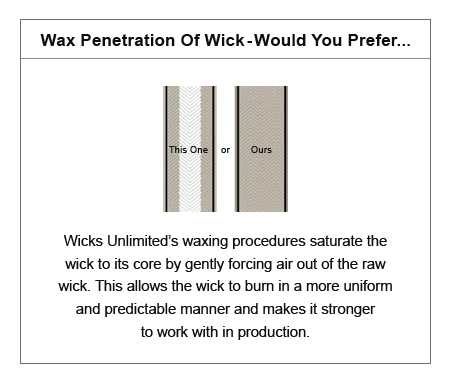
- As a final note, we are pleased to provide confidential preliminary and problem solving test burning and wick selection for our customers. Drawing on decades of experience and with the assistance of formidable library of wicks, time lapse and infrared photography, our busy lab is not only a place of technical assistance, but also continual learning.
Conclusion:
Unless you are Wicks Unlimited, who really wants to wax wick? Are you really saving money by doing it yourself? It’s more than the cost of the wick and wick wax…and all that floor space, all that capital investment…are you really saving money by doing it yourself? Can you trust someone else to help you out? We welcome you to the world of Wicks Unlimited. The partnership potential is unlimited!
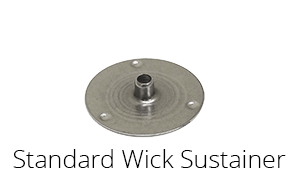 Candle manufacturers understand their customers’ preferences, two of them being the temperature of the candle’s base and the amount of wax remaining at the candle’s end of life. The candle combustion experts at Wicks Unlimited work with manufacturers to determine the appropriate metal wick sustainer for their specific candle system to meet their customers’ expectations. Let’s explore why Wicks Unlimited candle sustainers are preferred by leading candle manufacturers globally.
Candle manufacturers understand their customers’ preferences, two of them being the temperature of the candle’s base and the amount of wax remaining at the candle’s end of life. The candle combustion experts at Wicks Unlimited work with manufacturers to determine the appropriate metal wick sustainer for their specific candle system to meet their customers’ expectations. Let’s explore why Wicks Unlimited candle sustainers are preferred by leading candle manufacturers globally. 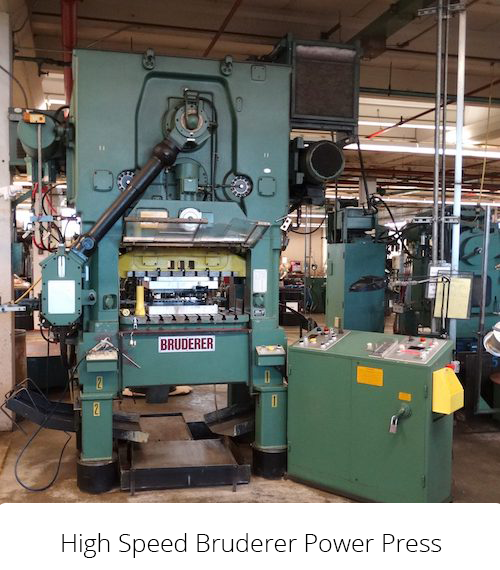 leading global manufacturer of standard and special eyelets, Wicks Unlimited wick sustainers meet the latest international quality standards and management systems stipulated in ISO 9001:2015. Wicks Unlimited manufactures and supplies 24 different sustainers of varying base diameters, neck heights, and hole diameters. They are made from the highest quality tin-coated steel to inhibit corrosion often caused by fragrance and essential oils, featuring an industry-leading .010″ (0.254) metal thickness.
leading global manufacturer of standard and special eyelets, Wicks Unlimited wick sustainers meet the latest international quality standards and management systems stipulated in ISO 9001:2015. Wicks Unlimited manufactures and supplies 24 different sustainers of varying base diameters, neck heights, and hole diameters. They are made from the highest quality tin-coated steel to inhibit corrosion often caused by fragrance and essential oils, featuring an industry-leading .010″ (0.254) metal thickness.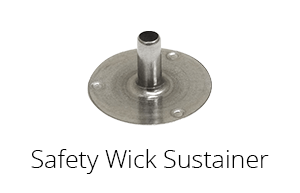 container. Wicks Unlimited offers 3.8 mm, 6.0mm, 10.0 mm, 13.0 mm, 13.2mm, 14.5mm, and custom wick sustainer lengths. The sustainer’s height determines the container’s base thermal profile, indicating an aggressive or a conservative system and the remaining amount of wax at the candle’s end of life. As a rule of thumb, sustainers above 10.0 mm can be considered safety sustainers, while sustainers below 10.0 mm are considered regular. It is important to note that the height of the neck determines how much wax remains on the container’s glass bottom at the candle’s end of life.
container. Wicks Unlimited offers 3.8 mm, 6.0mm, 10.0 mm, 13.0 mm, 13.2mm, 14.5mm, and custom wick sustainer lengths. The sustainer’s height determines the container’s base thermal profile, indicating an aggressive or a conservative system and the remaining amount of wax at the candle’s end of life. As a rule of thumb, sustainers above 10.0 mm can be considered safety sustainers, while sustainers below 10.0 mm are considered regular. It is important to note that the height of the neck determines how much wax remains on the container’s glass bottom at the candle’s end of life.
